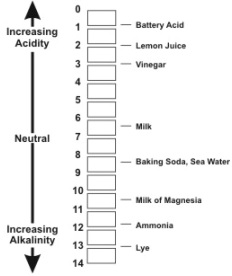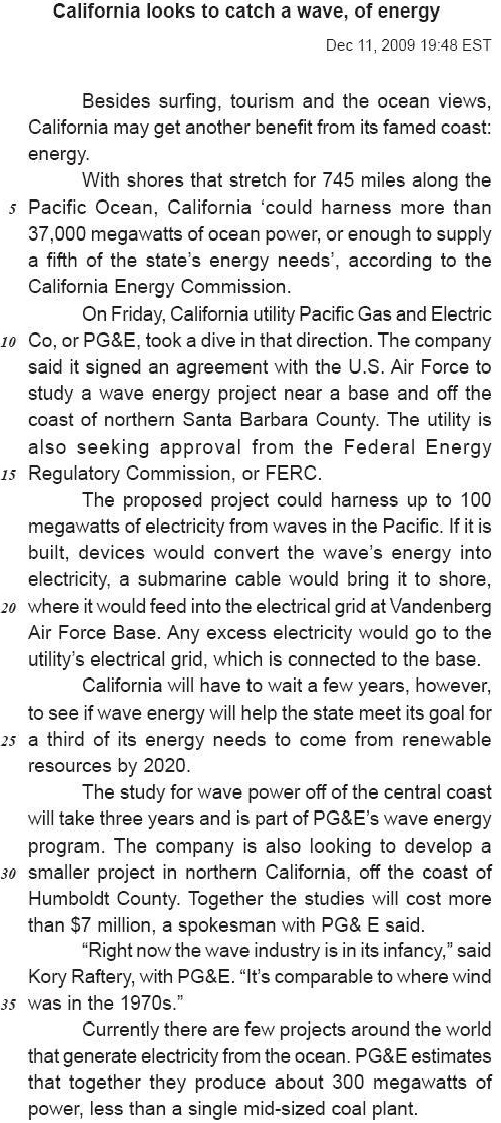Simulado Números | Numbers | CONCURSO
Simulado Números | Numbers
Se você irá prestar algum concurso que cobre a matéria de Números | Numbers não pode deixar de praticar com nossos simulados grátis.
Vejam todos os simulados Números | Numbers
São milhares de simulados para concurso disponível para você praticar e conseguir a tão sonhada aprovação em Concurso Público.
Este Simulado Números | Numbers foi elaborado da seguinte forma:
- Categoria: CONCURSO
- Instituição:
Diversas - Cargo: Diversos
- Matéria: Números | Numbers
- Assuntos do Simulado: Diversos
- Banca Organizadora: Diversas
- Quantidade de Questões: 8
- Tempo do Simulado: 24 minutos
Vejam outros Simulado Números | Numbers
REGRA DO SIMULADO
Para realizar este simulado, que é gratuito, você apenas precisara criar no botão Iniciar logo abaixo e realizar um breve cadastro (apenas apelido e e-mail) para que assim você possa participar do Ranking do Simulado.
Por falar em Ranking, todos os nossos simulados contém um ranking, assim você saberá como esta indo em seus estudos e ainda poderá comparar sua nota com a dos seus concorrentes.
Aproveitem estes simulados Números | Numbers e saiam na frente em seus estudos.
Questões Números | Numbers
Caso você ainda não se sinta preparado para realizar um simulado, você poderá treinar em nossas questões de concursos, principalmente as questões de Números | Numbers, que também são grátis. Clique Aqui!
Vejam todos os simulados Números | Numbers
Boa sorte e Bons Estudos,
ConcursosAZ - Aprovando de A a Z
- #221942
- Banca
- . Bancas Diversas
- Matéria
- Números | Numbers
- Concurso
- . Concursos Diversos
- Tipo
- Múltipla escolha
- Comentários
- Seja o primeiro a comentar
(1,0) 1 -
A difference of four units, from six to two, means that the acidity is
- a) two hundred times greater.
- b) four hundred times greater.
- c) ten thousand times greater.
- d) two thousand times greater.
- e) twelve hundred times greater.
- #221946
- Banca
- . Bancas Diversas
- Matéria
- Números | Numbers
- Concurso
- . Concursos Diversos
- Tipo
- Múltipla escolha
- Comentários
- Seja o primeiro a comentar
(1,0) 2 -
In the text 06, the numbers "116” (line 14) and "35" (in the reference), are, in compliance with Bristish usage, written respectively as:
- a) one hundred and sixteen; thirty - five.
- b) a hundred sixteen; thrity five.
- c) one hundred and sixtyeen; thirty five.
- d) a hundred sixty; third - five.
- e) one - hundred sixteen; thirty – five.
- #221948
- Banca
- . Bancas Diversas
- Matéria
- Números | Numbers
- Concurso
- . Concursos Diversos
- Tipo
- Múltipla escolha
- Comentários
- Seja o primeiro a comentar
(1,0) 3 -
Choose the option that shows an example of ordinal numbers:
- a) “The “Edinburgh declaration”, published on Monday, urges leaders to work more closely with sub-national governments, indigenous peoples, national parks, local councils and wider society in meeting 20 biodiversity goals”
- b) “signed in Nagoya, Japan, 10 years ago.”
- c) “Thompson said Scotland was set to meet nine of the Aichi goals.”
- d) “The convention on biological diversity was first opened for signature at the Earth summit in Rio de Janiero, Brazil, in 1992.”
- e) None of them show an ordinal number.
- #221958
- Banca
- . Bancas Diversas
- Matéria
- Números | Numbers
- Concurso
- . Concursos Diversos
- Tipo
- Múltipla escolha
- Comentários
- Seja o primeiro a comentar
(1,0) 4 -
Analyzing the numerical figures in Text 1,
- a) ".745 miles." (line 4) - refers to the total extension of the California coast.
- b) ". more than 37,000 megawatts." (lines 5-6) - refers to the power already generated by California waves.
- c) ".2020." (line 26) - refers to year when wave energy alone will supply most of California's energy needs.
- d) ".more than $7 million," (lines 31-32) - refers to the final cost of global studies on wave power.
- e) ".1970s." (line 35) - refers to the decade when the use of wind energy reached its peak.
- #221962
- Banca
- . Bancas Diversas
- Matéria
- Números | Numbers
- Concurso
- . Concursos Diversos
- Tipo
- Múltipla escolha
- Comentários
- Seja o primeiro a comentar
(1,0) 5 -
In terms of numerical reference in Text I,
- a) 1.4 million (line 13) refers to the number of people who have been involved in conflicts over water.
- b) 47% (line 17) refers to the percentage of countries in the world already facing water scarcity.
- c) more than three billion people (line 19) refers to the number of people who might suffer from water shortage by 2025.
- d) 2009 (line 22) refers to the only year when Cyprus faced an unparalleled rise in temperature.
- e) 30-year horizon (line 59) refers to the period of time the financial crisis in Europe will last.
- #221965
- Banca
- . Bancas Diversas
- Matéria
- Números | Numbers
- Concurso
- . Concursos Diversos
- Tipo
- Múltipla escolha
- Comentários
- Seja o primeiro a comentar
(1,0) 6 -
Read the text below and answer the questions that follow:
Brazil's universities take affirmative action
By Julia Carneiro
BBC Brasil, Rio de Janeiro
28August 2013
Antonio Oliveira has benefited from the “quotas” in the first semester since the law came into effect. As a teenager he had to balance his time between school and helping his parents harvest vegetables to sell at a farmer's market, and doing other small jobs to scrape by.
Until recently, he says the only prospects for those growing up in his city, Colinas, were to work with crops or to get a post at the city hall - “a mediocre job that people think is heaven,” as he puts it. But Antonio has just finished his first term studying Economic Sciences at Rio de Janeiro's prestigious Federal University (UFRJ), a dream he had nurtured since his days at a rural public school.
His placement represents a radical change in the Brazilian university system.
Competition for places
Anew law approved a year ago reserves 50% of spots in Brazil's federal universities for students coming from public schools, low-income families and who are of African or indigenous descent.
“I think this is a life-changing opportunity.I hope I will get a good job after university and be able to give my parents more comfort as they grow old,” said Antonio Oliveira, student.
The number of posts reserved for black, mixed race and indigenous students will vary according to the racial make-up of each Brazilian state.
Ten years ago affirmative action gradually started being adopted in both state and federally funded Brazilian universities, in an attempt to give underprivileged Brazilians better chances of getting free higher education - and thus access to better jobs. Half of Brazil's population is ofAfrican descent, but the country's public universities tend to reflect the Brazilian upper classes - who are mostly white.
Although these universities are free, those who traditionally made it in usually came from expensive private schools. Students from public education - the majority of whom are black or mixed race - were less likely to secure one of the highly competitive places. Now the “quotas” are mandatory in all of Brazil's 59 federal universities, which have until 2016 to reserve half of their positions for affirmative action.
Controversial issue
Antonio Freitas says the country is moving backwards with the quota policies.
But racial quotas have sparked widespread controversy in Brazil. Many who are against them argue that easing access to higher education denies the principle of merit that brings excellence to universities.
“This is bad for the future of Brazil, because the main objective of universities is research, is to achieve quality,” says Antonio Freitas, provost of the Getulio Vargas Foundation, a prestigious private university.
“Eventually you may not have the most qualified people in engineering, in medical school, in the most challenging areas which Brazil needs to develop.”
Adapted from: <
The sentences below provide further information about the studentAntonio Oliveira. Choose the only sentence in which the expression used to refer to his age is correct.
- a) Twenty four years old Antonio Oliveira was born into a poor, mixed race family in the state of Maranhao in north-east Brazil.
- b) He's twenty four years Antonio Oliveira was born into a poor, mixed race family in the state of Maranhao in north-east Brazil.
- c) He has twenty-four years old Antonio Oliveira was born into a poor, mixed race family in the state of Maranhao in north-east Brazil.
- d) Twenty-four-year-old Antonio Oliveira was born into a poor, mixed race family in the state of Maranhao in north-east Brazil.
- e) Twenty-four-years-old Antonio Oliveira was born into a poor, mixed race family in the state of Maranhao in north-east Brazil.
- #221967
- Banca
- . Bancas Diversas
- Matéria
- Números | Numbers
- Concurso
- . Concursos Diversos
- Tipo
- Múltipla escolha
- Comentários
- Seja o primeiro a comentar
(1,0) 7 -
Answers the question according to the text below.
TEXT I
The time to embrace change in education is right now! In fact, it’s long overdue. Did you know that the model for modern-day public education was created by the need for on-time mechanical workers during the industrial revolution? That was certainly a technological disruption, but it happened 250 years ago. It’s what we call the front-lead method, and it’s not the best model for addressing the learning needs of many students: divergent thinkers, neurodiverse minds, creatives, scientists, and the list goes on. Which brings us to our next point: it’s time for the next wave of disruption. Luckily for us, it’s here. And it’s been here since 1989, when Tim Berners-Lee — a British scientist from CERT — invented the World Wide Web. We know, you use the internet every day, and it’s great, but maybe you’re skeptical that it can revolutionize education. Well, if you didn’t know, it already is. A large body of evidence-based, peer reviewed work points to the web as one of the central hubs for positive educational change today. It’s our connection to others, our access to a world of educational resources, it’s a format that works for many learners, it’s at the heart of countless services (that don’t work in an unconnected world), and it’s driving access to education.
https://www.early-childhood-ed...;
“A large body of evidence-based, peer reviewed work points to the web as ONE of the central hubs for positive educational change today.” The word ONE (line 13) is a:
- a) verb
- b) number
- c) pronoun
- d) preposition
- e) conjunction
- #221972
- Banca
- . Bancas Diversas
- Matéria
- Números | Numbers
- Concurso
- . Concursos Diversos
- Tipo
- Múltipla escolha
- Comentários
- Seja o primeiro a comentar
(1,0) 8 -
Leia o texto abaixo e responda a questão.
Mary is a nice woman. She is a nurse and works in a big hospital. She works at night on weekends. Mary has two young children and they are very intelligent. Their names are "Jack" and "Julie". Jack is nine years old and Julie is eleven years old. Jack likes soccer and Julie loves movies. Jack wants to be a soccer player and Julie wants to be a movie star. Mary likes to be with her children when she isn't working - they play board games together. Mary's family is very happy, especially when Jake, Mary's husband, is at home with them. Jake usually travels a lot and visits different places - he is a truck driver.Leia o trecho abaixo:
“Mary has two young children and they are very intelligent. Their names are "Jack" and "Julie". Jack is nine years old and Julie is eleven years old.”
How many numerals appear in the sentence?
- a) Four.
- b) Five.
- c) Two.
- d) seven
- e) Nenhuma das alternativas.




